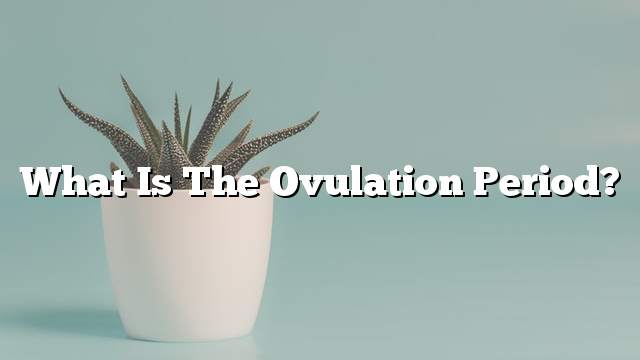Formation of oocytes
The formation of eggs in the body of the female fetus begins in the sixteenth week of pregnancy, where there are approximately six million to seven million eggs during the embryonic stages, and the eggs are not produced after that, and at birth, the number becomes about one million, and when reaching the age of puberty or age Reproductive, which is often between the eleventh to the sixteenth year of age may be only three hundred thousand, and remove three hundred to four hundred eggs during ovulation monthly the length of women’s reproductive life.
Menstrual cycle
Is a group of hormonal and physical changes that occur monthly to prepare the woman’s uterus for the possibility of pregnancy, where one egg out of one of the ovaries in a process called ovulation (ovulation) and if not fertilized by a sperm, the process of embolization of the lining of the uterus formed previously and accompanied by Blood, which is known as the menstrual cycle (Menstrual Period). Menstruation begins in females from puberty and continues until menopause.
Women differ in the duration of the menstrual cycle, which extends from the first day of the menstrual cycle to the first day of the next menstrual cycle. The normal average is between twenty-eight to thirty-two days, and may be longer or shorter in some women. It usually takes two to seven days.
Menstrual cycles menstrual cycle
There are three phases in which the menstrual cycle:
- The follicular phase: (Follicular phase) is the pre-egg phase.
- Ibadi phase: (Ovulatory Phase).
- Zero phase: (Luteal Phase) is the post-egg phase.
Follicular phase
The follicular phase begins with the first day of bleeding, where the upper layers of the lining of the uterus are decomposed and dissociated into menstrual blood. Estrogen is a little at the beginning of this stage, prompting the hypothalamus gland to send signals to the pituitary gland to produce the hormone follicle stimulating hormone. In turn, more than one follicle stimulates growth and development into a mature ovary inside the ovaries, but one follicle overcomes everyone as it develops to give the mature egg. This follicle produces estrogen and the rest of the follicles decompose. Women vary greatly during this period, ranging from seven days to forty days.
Ovulatory phase
Ovulation stage in women
The ovary phase begins with the sudden and rapid increase of the hormone Luteinizing Hormone, which stimulates the ovule on the ovary of the ovary in a process called ovulation or ovulation. It may occur within thirty-six hours after the emergence of the melatonin. The egg then begins its journey through the fallopian tube Tube Fallopian) waiting for the sperm to complete the fertilization process.
It is noted that the process of ovulation is not rotating between the ovaries monthly, but be random, as the ovary itself continues to take out an egg monthly if the other ovary was removed. It is worth noting that the hormone estrogen increases to reach the highest stage of this stage, while Progesterone (progesterone) starts gradually increase.
The importance of knowing the ovulation period
The importance of knowing the time of ovulation in women in the planning of pregnancy or contraception, where the woman is at the peak of fertility on the day of ovulation, and during the five days before the ovulation, and this is due to the ability of the sperm to survive in the body of women until five days after intercourse , While the egg remains alive for only 12 to 24 hours after exiting the ovary.
Factors affecting the process of ovulation
External factors such as fatigue, stress, illness and change in daily activities may affect the date of ovulation, and therefore the date of the next session. The amount and quality of oocytes also decrease with age, so that ovulation becomes irregular, making fertility less common among women after the age of 35, thus reducing their chances of pregnancy.
Some difficulties in ovulation stage
Some women notice spots of blood during the ovulation phase, others feel pain on one of the lower sides of the abdomen, and the pain is called ovulation (German: Mittelschmerz). It literally means pain in the middle of the cycle. The pain is the ovary, To several hours.
Methods of knowing ovulation day
- Countdown: Women with a regular menstrual cycle – every twenty-eight days – where the countdown is fourteen days from the expected date of the next cycle.
- Basic body temperature: Measuring the body’s core temperature every morning before getting out of bed may give an indication of the timing of ovulation, where there is a slight increase in body temperature after ovulation, due to progesterone.
- Vaginal secretions: The nature of vaginal discharge changes during the ovulation period as it becomes similar to egg white.
- Ovulation Screening Device: A very accurate and easy to use method is based on the principle of checking the level of hormone in the urine of women, where the hormone increases abruptly thirty-six hours before ovulation.
Azure phase
The urethral phase begins after ovulation and lasts about fourteen days, ending before the start of the next menstrual period. In this phase, the remaining follicle is the corpus luteum, which produces the hormone progesterone responsible for increasing the thickness of the lining of the uterus and is filled with fluids and nutrients for the fetus. It is worth mentioning that estrogen is high in this It also helps to increase the thickness of the uterus. If the fertilization of the egg or fertilization of the egg fertilized in the uterus is not performed, the yellow body decomposes after 14 days, estrogen levels and progesterone hormones decrease and a new menstrual cycle begins.
